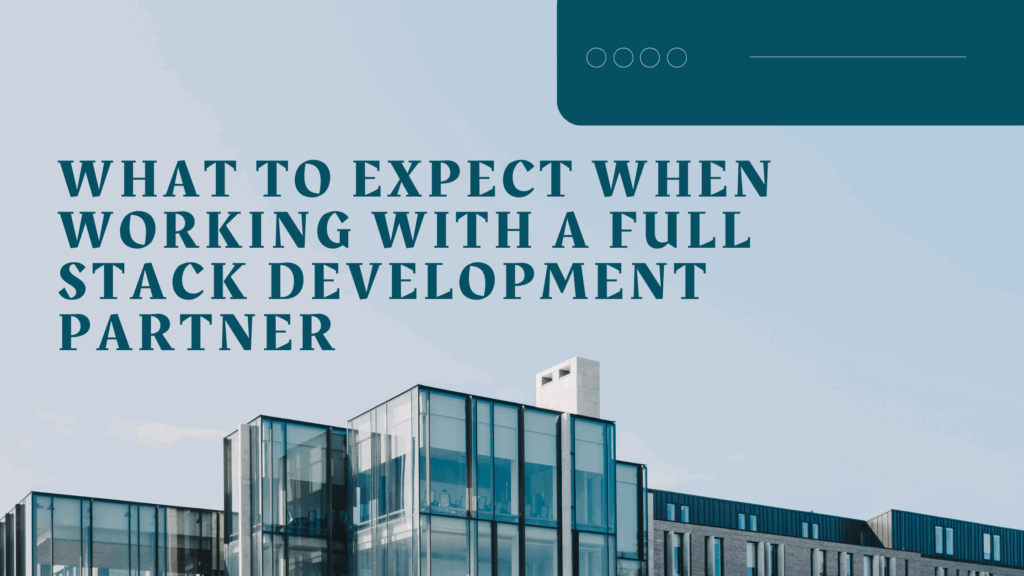So, you’re considering partnering with a Full Stack development team. Smart move. But what does that really mean for you and your project? Is it a simple “hire and relax” situation, or should you brace for complexity, surprises, or a complete overhaul of how you think about software development?
Let’s set the record straight with an honest, detailed look at what working with a Full Stack development partner entails—no sugarcoating, no hype, just the facts you need to know before you take the plunge.
Understanding the Full Stack Advantage
First off, what exactly are you getting when you hire a Full Stack development partner? The term “Full Stack” is tossed around a lot, sometimes loosely. At its core, Full Stack development means expertise spanning the entire spectrum of application development—from backend server logic, databases, and APIs to frontend interfaces and user experience.
Why does that matter? Because your partner isn’t just coding isolated components; they’re building cohesive solutions that think holistically about your product. This synergy means smoother communication, faster problem-solving, and fewer gaps between different parts of your app.
Expect your Full Stack partner to be your all-in-one technical strategist, able to handle everything from infrastructure design to UI finesse.
A Collaborative Approach, Not a Vendor Transaction
Here’s where many businesses get it wrong: treating a Full Stack development partner as a simple vendor to “execute” their vision. That’s a recipe for frustration.
A competent Full Stack partner wants to collaborate. They’ll want to understand your business goals, your users’ needs, and your constraints. They’ll ask the tough questions—sometimes the ones you didn’t think of.
You should expect candid conversations that challenge assumptions. This partnership goes beyond code; it’s about aligning technology with your strategy.
If your partner isn’t engaging you in meaningful dialogue, that’s a red flag.
Transparency and Communication Are Non-Negotiable
Working with Full Stack developers means juggling multiple moving parts: frontend and backend, databases, APIs, cloud services, security layers, and often third-party integrations.
Without crystal-clear communication, this complexity turns chaotic.
Expect your partner to set up regular check-ins, demos, and open channels—whether that’s Slack, project management tools, or video calls. Transparency about progress, challenges, and risks is essential.
They should provide you with understandable updates, avoiding tech jargon when possible but never hiding issues behind buzzwords.
Good partners don’t just report; they educate and empower you to make informed decisions.
Flexible and Agile Development Processes
Full Stack teams thrive in Agile environments. You should expect iterative development cycles—think sprints where tangible progress is delivered frequently rather than waiting months for a “final” product.
This approach lets you see working software early and often, giving you the chance to adjust course before it’s too late.
It also means your partner is ready to adapt to changing requirements, user feedback, or market shifts.
Beware of teams locked into rigid waterfall models—they’re less suited to modern Full Stack collaboration and can slow your momentum.
Technical Excellence Across the Entire Stack
You want your partner to be genuinely skilled across multiple technologies. This means backend languages (Node.js, Python, Ruby, Java), frontend frameworks (React, Angular, Vue), databases (SQL, NoSQL), and deployment strategies (cloud services, containerization, CI/CD pipelines).
Expect them to recommend technologies based on your needs, not just trends.
Their expertise should extend to security best practices, performance optimization, and scalable architecture design.
You should also anticipate that they’ll keep current with industry standards and emerging tools to future-proof your product.
End-to-End Accountability
One huge advantage of a Full Stack partner is clear ownership. Rather than pointing fingers between frontend and backend teams when issues arise, you have one accountable unit.
Expect your partner to own the entire lifecycle—from initial design and development to testing, deployment, and post-launch support.
This end-to-end responsibility typically leads to higher quality and fewer integration issues.
But don’t mistake this for a “set it and forget it” scenario—ongoing collaboration and feedback remain essential.
Realistic Timelines and Budget Management
The software development landscape is riddled with projects that overpromise and underdeliver.
A trustworthy Full Stack partner will set realistic expectations upfront.
You should expect detailed project scopes, phased delivery plans, and transparent budgeting.
They’ll explain trade-offs between features, timelines, and costs without glossing over complexities.
If a partner guarantees an impossibly fast launch for an ambitious app, proceed with caution.
Honesty about what can be delivered and when is a hallmark of professionalism.
Testing and Quality Assurance Are Built-In, Not Afterthoughts
Full Stack development is more than writing code—it’s about ensuring your app works flawlessly under real-world conditions.
Expect your partner to integrate testing early and throughout the process.
This includes unit tests, integration tests, UI tests, and load testing.
A robust QA process prevents surprises and reduces costly fixes post-launch.
Make sure testing strategies are discussed openly and tailored to your project’s complexity.
Security: A Foundation, Not an Afterthought
In today’s digital world, security isn’t optional. From data breaches to regulatory compliance, your app’s safety is paramount.
Expect your Full Stack partner to bake security into every layer.
This means secure coding practices, encrypted data transmission, authentication and authorization controls, and regular vulnerability assessments.
A capable team stays ahead of threats and ensures your users’ trust remains intact.
Don’t settle for teams that treat security as a checkbox.
Post-Launch Support and Maintenance
Launching your app is just the beginning.
You’ll want a partner that’s ready to handle updates, bug fixes, scaling challenges, and feature expansions.
Expect clear SLAs (Service Level Agreements) for ongoing support.
Your Full Stack partner should also provide monitoring tools to detect issues before users do.
This long-term relationship is critical to your app’s success and evolution.
Cultural Fit and Team Dynamics
Technical skills are essential, but cultural alignment often makes or breaks a partnership.
Expect your partner to match your communication style, work ethic, and project values.
Good chemistry helps smooth over inevitable bumps and keeps momentum strong.
If you sense friction or misalignment early on, address it candidly or reconsider.
Building software is a marathon, not a sprint.
What Full Stack Development Won’t Do
For balance, let’s clear a few misconceptions.
Full Stack developers won’t magically turn unclear ideas into polished products without input.
They’re not superheroes who write flawless code overnight.
They won’t replace specialized roles like UX designers or data scientists but collaborate with them.
Your partner adds immense value but needs your active involvement and clear direction.
Making the Most of Your Full Stack Partnership
To maximize results:
-
Be clear about your goals and priorities.
-
Engage actively during planning and reviews.
-
Provide timely feedback.
-
Trust their expertise but don’t hesitate to ask questions.
-
Keep communication lines open and honest.
Remember, it’s a two-way street.
When you treat your Full Stack partner like a true extension of your team, you unlock innovation and efficiency few other models can offer.
Conclusion
Choosing a Full Stack development partner is more than picking a service provider; it’s about forging a strategic alliance that impacts your product’s trajectory.
Expect a collaborator who balances deep technical knowledge with agile processes, transparent communication, and accountability.
They will guide you through complexity with clarity and deliver cohesive, scalable solutions.
If you’re ready to break down silos and embrace end-to-end craftsmanship, Full Stack development can be your game changer.
And when you do, remember that the right full stack developer services provide not just code—but a partnership built for success.






